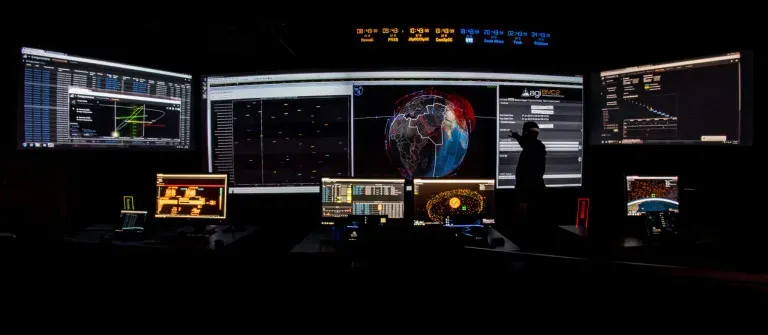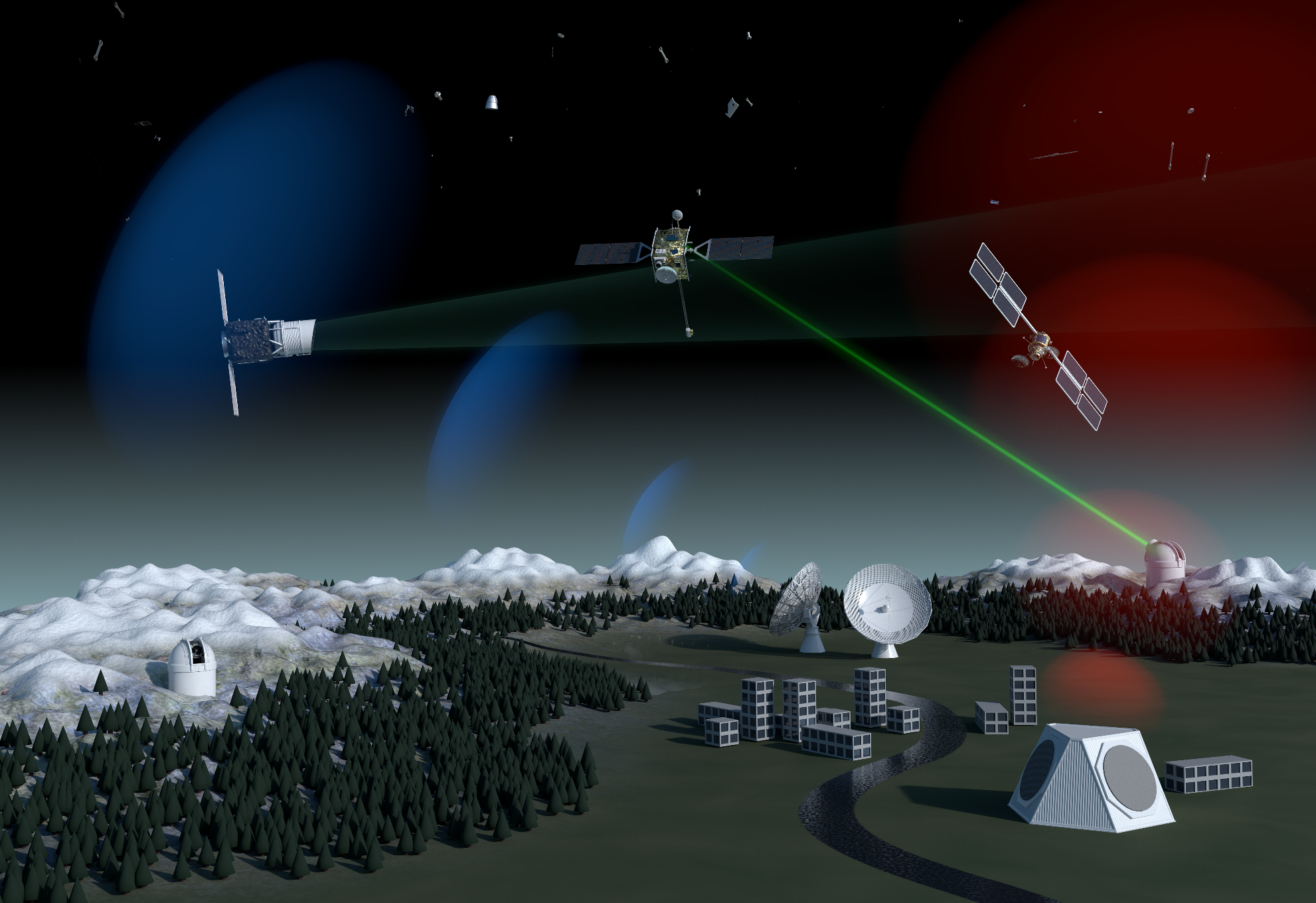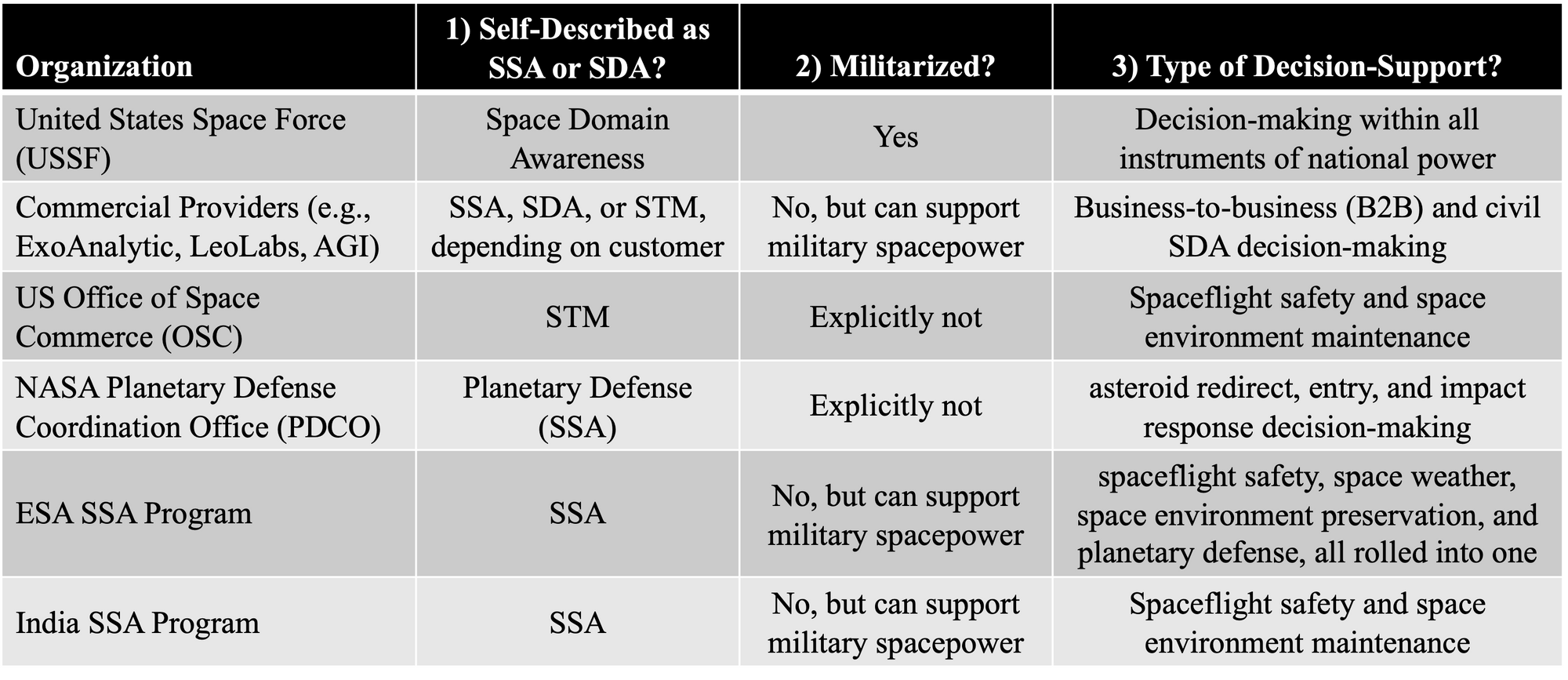A Lustrous Palette of Awareness in Space
Space Domain Awareness is confused with militarized Space Situational Awareness. It shouldn't be.

This article is partially inspired by Alaric Gregorio with a comment regarding a previous essay of mine: Space Situational or Domain Awareness? Know the Difference!. The questions raised are interesting and thought-provoking - which means they’re worth discussion in an article! His remarks probe at whether 1) the difference between SDA and SSA is organization-specific (i.e., is it only the US military and Five Eyes that view SDA in the way I describe), 2) is the definition of SDA overly militarized, and 3) what type of decision-making is supported?
Space Domain Awareness (SDA), a networked collection of local and task-specific Space Situational Awareness (SSA) nodes, is generalizable beyond the specific objectives, uses, and desired outcomes of an organization. SDA systems, i.e. actual implementations of SDA by an entity, reflect the decision-making needs of the organization. SDA system instantiations can be commercial-, civil-, military-, science-focused, or objectives-based composites of these.
Let’s 1) briefly review what a Space Domain Awareness System is, 2) discuss a variety of Space Domain Awareness instantiations, and 3) compare and contrast them.
Onward!
1) Refresh Me! What is a Space Domain Awareness System?
Systems and Systems of Systems
That title was fun to say.
As products designed by engineers become more complex, we sometimes call the product a system. By the term system we mean a collection of components, whether mechanical, electrical, software, or otherwise, that combine to for a device (e.g., a smart phone), vehicle (e.g. a car), or something similar.
A system of systems is created when a collection of individual systems are linked, integrated, combined, or coupled by design. Their networking can be centralized, distributed, federated, or something else. We could think of it as a hierarchical abstraction of the original usage of the world system.
Us aerospace engineers (guilty) claim the foundations of systems engineering - the formal discipline of designing systems and systems of systems - has its genesis in the Cold War. Aerospace folk lore has it that the increasingly complex systems of systems necessary for national defense and great power competition required these structures - the things engineers were designing were simply too complex for any one person to completely understand.

The Air Transportation Network is an example. The system of systems is contains airplanes, regional air traffic control, and ground facilities, amongst others. Together they make regional and international travel possible across different municipalities, governments, and continents.
Another example is the SpaceX Starlink constellation containing satellites within the constellation, command & control nodes (i.e., operations centers), uplink / downlink stations, and end-user antennas. Individually each are a system. Combined they provide emergent capabilities that are more than the sum of the individual systems. In this case, that’s global ubiquitous high-speed internet access.
Alright, let’s refresh ourselves on Space Domain Awareness.
Domain Awareness in Space as a System of Systems
The definition of Space Domain Awareness is an article in its own right. Much like any complex system of systems, it can have many definitions. One is:
Space Domain Awareness (SDA) includes detection, tracking, characterization, and understanding of objects and actors within and acting upon the space domain now, in the past, and in the future. The purpose of SDA is to enable timely, quality decision-making at the tactical, operational, and strategic levels for all instruments of national power.
Holding on to the systems of systems thread, an alternate definition could be:
Space Domain Awareness may be considered a distributed and sometimes hierarchical fusion of individual Space Situational Awareness 'nodes.' The sum is more than the whole of the parts because of networking and command & control effects.
Now we have a working understanding that Space Domain Awareness is a system of systems. We also have an idea of some basic functions and purposes of Space Domain Awareness.
Let’s talk about a few different actual Space Domain Awareness systems.
2) Examples of Space Domain Awareness Systems
For each Space Domain Awareness system instantiations, we’ll review:
- Is it called SSA or SDA?
- Is it militarized?
- The type of supported Decision-Making and desired Outcomes
Questions 1), 2), and 3) directly correspond to those introduced at the beginning of this article. After discussing each system, we’ll summarize their responses to these questions and discuss further.
Each example will be given a light touch - even though each merits it's own in-depth discussion! More depth is out of scope for this article.
The United States Space Force SDA Enterprise
As the progenitor of the term Space Domain Awareness, the United States Space Force (USSF) and the Department of Defense (DoD) consider it to be fundamental to enabling military spacepower. The USSF also views their mission as enabling decision-making and action for other instruments of national power - economic, intelligence, and diplomatic - within the space domain.
"Space Domain Awareness (SDA) encompasses the effective identification, characterization, and understanding of any factor associated with the space domain that could affect space operations and thereby impact the security, safety, economy, or environment of our Nation." (pg. 34, Spacepower - Doctrine for Space Forces)
Self-Described as SSA or SDA? Space Domain Awareness
Militarized? Yes, but also enables diplomatic, economic, and intelligence instruments of national power.
Supported Decision-Making. Very wide; includes decision-making within all United States instruments of national power.
For-Profit Domain Awareness
In the 2010s, commercial endeavors began answering the need for low-cost and responsive sensors to support the United States Air Force (USAF) and now USSF data collection mission. Examples include ExoAnalytic Solutions, LeoLabs, and AGI. These companies provide electro-optical (i.e., telescope), radio-frequency (i.e., radar) observations, and data fusion to a variety of customers.
Observations are collected with multiple sensors at multiple sites. The local Space Situational Awarenesses of each sensor site is fused into a picture of the space domain. Private industry instantiations of Space Domain Awareness have emerged.

The examples I have given - LeoLabs, AGI, and ExoAnalytic - are in the United States and limited in their export of data, information, knowledge, and wisdom produced by their Space Domain Awareness systems.
Self-Described as SSA or SDA? Both; depends on the customer
Militarized? No; commercial providers generally only provide data or information for military activities.
Supported Decision-Making. Increasing amounts; support for business-to-business (B2B) and civil SDA decision-making
An Underfunded Civil Counterpart
I’m speaking of the Department of Commerce’s Office of Space Commerce (OSC). As directed by Space Policy Directive 3 the USSF is required to transition the civil aspects of the USSF Space Domain Awareness to OSC.
In a civil capacity SDA is enables decision-making in Civil Space Traffic Management (Civil STM). The functions of an SDA system intended to support Civil STM decision-making are objectively the same as military-focused SDA.
Self-Described as SSA or SDA? Neither - self-defined as Civil Space Traffic Management, though this includes all foundational SDA capabilities to enable decision-making.
Militarized? Explicitly not.
Supported Decision-Making. Spaceflight safety and space environment maintenance.
Defending the Planet - On a Shoestring
NASA's Planetary Defense Coordination Office (PDCO) is responsible for detecting, tracking, building trajectories, identifying potentially dangerous Near Earth Asteroids (NEOs), and coordinating responses to impacts.
It collects observations through the Near Earth Observation Program, which funds observatories to collect necessary surveys and follow-up observations. Detections are then passed to the Minor Planet Center, an internationally-sanctioned open-data archive and data fusion facility funded by NASA's PDCO.
Much like Civil STM, the planetary defense function includes all elements of Space Domain Awareness. Data collection, fusion, and characterization are intended to support decision-making at the national and international level.
I note that the United States DoC OSC and NASA's PDCO do communicate and coordinate with one another.
Self-Described as SSA or SDA? Neither; self-described as Planetary Defense, though it includes all SDA elements that support decision-making.
Militarized? Explicitly not.
Supported Decision-Making. Informs asteroid redirect, entry, and impact response decision-making.
A True Civil Space Domain Awareness
The European Space Agency (ESA) Space Situational Awareness Program has three principle missions: 1) ensure spaceflight safety and continued utilization of space (i.e., Civil STM), 2) quantify, understand, and predict space weather, and detect, track, and 3) characterize NEOs.

Space weather's relationship to SDA is an article unto itself. Here I'll simply claim that space weather is an element of SDA because it enables decision-making.
Based on prior discussion of the United States OSC Civil STM function and NASA's Planetary Defense efforts, I argue that ESA's SSA Program is in reality an SDA system (again, based on definitions and differences here). It is a knowledge factory to inform decision-making in space. At its core it collects data, generates information / evidence, and produces knowledge to support ESA decision-making in space.
The ESA SSA program fuses all aspects of non-military Space Domain Awareness into a single effort.
Self-Described as SSA or SDA? SSA, though in reality I claim it is an SDA system
Militarized? Explicitly not, though it is conceivable that it could serve decision-making within military, economic, intelligence, and diplomatic instruments of power for the European Union.
Supported Decision-Making. Decision-making for spaceflight safety, space weather, space environment preservation, and planetary defense, all rolled into one.
New Beginnings On The Subcontinent
Finally, though certainly not least, India has developed and deployed national capabilities for SDA.
While self-described as SSA, the capabilities discussed are fundamentally knowledge production to support decision-making. The observation and data fusion capabilities constitute and SDA system.
Self-Described as SSA or SDA? SSA, though its functions and scope show it to be an SDA system.
Militarized? Not explicitly. As with ESA's SSA Program, decision-making within all instruments of power could be supported.
Supported Decision-Making. Spaceflight safety and space environment maintenance.
3) Comparison
The figure below summarizes answers to the questions posed at the beginning of this article.

Ok, that was a lot to get through. Let's synthesize and summarize!
Summary
I imagine this article may ruffle feathers. The very term 'Space Domain Awareness' is heavily associated with militarization of space because of its synonymity with the USSF. Many individuals and organizations would take exception at having their functions characterized as being SDA.

At the beginning of this article I asked whether 1) the difference between SDA and SSA is organization-specific, 2) is the definition of SDA overly militarized, and 3) what type of decision-making is supported?
I have reviewed what an SDA system is, summarized the definition of SDA, and highlighted the functional difference between SSA and SDA (not necessarily the same as what organizations call their decision-making support systems).
We must conclude that:
- Most Organizations Self-Define Differently, though I hope I've convinced you that they are all various instantiations of Space Domain Awareness systems.
- The Term Space Domain Awareness is independent of Militarization; while SDA is currently a byword of the USSF the basic functions are the same across military, commercial, planetary defense, space weather, and civil space traffic management. The are all system of systems that manufacture knowledge for decision-making in the Space Domain.
- SDA Decision-Making Support is Function-Specific, meaning that each SDA system discussed in this article is tailored to the decision-making it supports (e.g., military spacepower, space safety & utilization, profit).
I emphasize that each organization has its own definition of SDA, SSA, Planetary Defense, etc. However our more generalized definition of SDA allows us to 1) gain a deeper understanding how each of these systems are instantiations of SDA systems, and 2) provide a construct with which to understand and design SDA systems for organization-specific objectives.
Subscribe to the Newsletter
If you enjoy this content, show your support by subscribing to the free weekly newsletter, which includes the weekly articles as well as additional comments from me. There are great reasons to do so and subscriptions give me motivation to continue writing these articles! Subscribe today!


